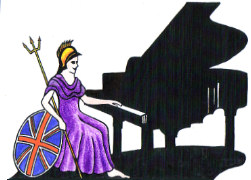Teachers, Accompanists and Piano Entertainers in the UK

UK Piano Page

The Old Dairy
21 Dowland Road
Limavady, County Derry / Londonderry BT49 OHP
Northern Ireland
Limavady pianos service repair and restore pianos
Rookery Farm
Radstock, Somerset BA3 4UL
England
Abbey Piano Services is run by a small team of
5 - 8 Chester Court
Albany Street
Camden Town, London NW1 4BU
England
For 100 years Markson Pianos have been one of the
154 High Street
Cardiff, South Glamorgan ll49 9NU
Wales/Cymru
PianosCymru is an award winning piano dealership
30 Pepper Street
Chester, Cheshire CH1 1DF
England
We supply all styles of Acoustic Piano, from
Music Festival for performers and guests Our 10th
18-06-2022 01:30PM
The Morecambe Bay Piano Group was set up to extend
11-12-2021 02:00PM
The Morecambe Bay Piano Group was set up to extend
08-01-2022 02:00PM
The Morecambe Bay Piano Group was set up to extend
12-02-2022 02:00PM